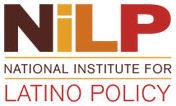
NiLP Commentary
The Potential of the New York Puerto Rican Parade
By Angelo Falcón
 It seems like the
National Puerto Rican Day Parade has been having trouble lately avoiding controversy. This year's parade
was widely applauded for taking on serious themes, respectfully presenting
Puerto Rican culture and serious personalities, and for being well-organized.
The television coverage of the parade on local Fox channels was well-produced
and informative. As one news article reported, it appears like the parade
Board of Directors had learned a lesson from last year's investigation
of its finances and operations. The new Board's performance this year
put to rest many of the questions raised last year about the parade's future.
It seems like the
National Puerto Rican Day Parade has been having trouble lately avoiding controversy. This year's parade
was widely applauded for taking on serious themes, respectfully presenting
Puerto Rican culture and serious personalities, and for being well-organized.
The television coverage of the parade on local Fox channels was well-produced
and informative. As one news article reported, it appears like the parade
Board of Directors had learned a lesson from last year's investigation
of its finances and operations. The new Board's performance this year
put to rest many of the questions raised last year about the parade's future.
Then, one the day after the parade, the New York Daily News, one of the parade's co-sponsors, really stepped in it by summarizing its coverage of the parade with an offensive photo of two scantily-dressed big-butted women with the title of "Rear View of the Parade." The problem was that these women were not part of the parade, were photographed panhandling in the Times Square area and weren't even Puerto Rican --- one was Venezuelan and the other Colombian! The Parade's Board Chair, former AARP Executive Lorraine Cortes-Vazquez immediately issued a letter to the Daily News calling for a front-page apology. After meeting with the Parade Board, the Daily News refused to this demand prompting picketing and the Parade Board's publicly severing ties with the newspaper.
On Saturday, June 20th, 5 days later, the paper published a half-hearted apologyOn Saturday, June 20th, 5 days later, On Saturday, June 20th, 5 days later,
While the Parade Board has apparently come to terms with the Daily News over this incident, it is clear that the Puerto Rican community hasn't and shouldn't. The Daily News' use of this particular photo was not only incompetent and out and out racist, but their so-called apology was based on a lie. According to the original Reuters news service photo used by the Daily News that was tweeted out by journalist Gerson Borrero last night, it turns out that the information provided by the news service was not what appeared in the Daily News. The caption by Reuters photographer Eduardo Muñoz with his June 14th photo read instead: "Women have their bodies painted with the words 'Puerto Rico and Boricua' at Times Square during the National Puerto Rican Day Parade on Fifth Avenue in Manhattan, New York." How this translates into the Daily News's headline "Rear View on Parade" doesn't follow. Why would the News' President and CEO, Bill Holiber, sign off on the following baseless excuse in yesterday's paper: "Due to misleading information provided to our editors by a wire photo service, we described these women as paradegoers"?
Richard Prince, in his influential Journal-isms blog, reported that:
Mekahlo Medina, president of the National Association of Hispanic Journalists, told members via the NAHJ website, "We are starting the #BastaNYDN hashtag. Let the Daily News know that respecting our culture, our ethnicity and good journalism is [a] must if they want Latinos to consume their content. Let them know that you not only want an apology, but you want more Latinos in the editorial decision making roles so this doesn't happen again."
While in their not-so-apologetic statement they falsely blame "misleading information" about the photo from the Reuter news service, they are unable to explain how a newspaper of professional journalists that calls itself New York's hometown paper and that has been covering New York for some many years could in any way justify its use of such a stereotypical and biased move. They need to understand that the damage they have done was not limited to the Parade but to the entire Puerto Rican community. Now, some might argue that I am making too much of this, after o all, it was just one photo in otherwise generally positive coverage by the Daily News of the Parade, But, as we all know, it is sometimes the small things that provide the most insight into one's true values and motives. In this case, there is apparently an element in the Daily News that is racist. It would appear that the right thing to do would be to discipline whoever was responsible and not simply paper the problem over with a misleading explanation.
In terms of the Parade's positive rebound after so many years of controversy, however, it is important not to forget what brought this institution to its current positive development. This required, after many years of criticisms, an investigation by New York Attorney General Eric Schneiderman into the finances and operations of this nonprofit institution. This was after a wide range of community activists aggressively raised issues about the corruption of the Parade and its over commercialization of Puerto Rican culture. There was the controversial issue of the Miller-Coors Light beer can use of the Puerto Rican flag as a logo as part of sponsorship of the Parade, as well as the misuse of Parade finances and resources. The result was the extraordinary order by the Attorny General for the reorganization of the Parade Board, the fining and removal of the Parade's business agent, Carlos Velasquez and his Galos Corporation (who stole over $1 million of the Parade's funds over the years), and other measures.
As the Parade hopefully continues to move in the right direction, it still has some unfinished business with the Puerto Rican community stemming from the results of the Attorney General's investigation and the concerns of community activists like Boricuas for a Positive Image and others. These include the at least the following:
1. Financial Transparency. In order to avoid the financial mismanagement of the past and promote trust in its operations, the Parade Board needs to develop a mechanism by which to make available its audited financial statements (not simply the unhelpful IRS 990 reports) to the public annually.
2. Open Board Membership Process. One comment insiders keep making is that while the current Parade Board membership is an improvement over the last, all we've done is replace one clique with a new one. While under current nonprofit corporation rules the Parade Board is self-perpetuating, this does not preclude them from developing a more open and public system of nominating members. This is a process where they could generate objective criteria on Board needs that could be made public calling for nominations from the Puerto Rican community. This would insure an open process and the ongoing recruitment of new blood.
3. Community Feedback on New By-Laws. Aspart of the Parade' settlement with the Attonry General they agreed to draft new organizational by-laws that reflect best nonprofit practices. This was supposed to have been done some time ago, but has yet to be completed. Once these are drafted, the Parade Board should convene a open community meeting to receive comments on the new by-law before adopting them.
4. Recover Lost Funding. As part of the agreement with the Attorney General, Carlos Velasquez agreed to replay $100,000 to the Parade in installments. As far as we know, these payments have not be made and the Parade and Attorney General's office have not aggressively secured them. It is important to assure the integrity of the agreement with the Attorney General and as a deterrent to possible future corruption in tehe Parade, that the pursuit of these payments become a priority for the Parade.
5. Significantly Increased Scholarship Goal. Given the Parade's overall budget of close to $1 million, it should be a priority of the Parade Board to significantly raise it scholarship goal of $30,000 to at least 10 percent of its budget or about $100,000. This more than anything else they do would represent their best investiment in the future of the Puerto Rican community.
Much progress has been made after many decades-old community struggles about the integrity of the National Puerto Rican Day Parade as one of the most important and definitely most visible Puerto Rican community institution. Its potential to do good in a community that is facing so many challenges is a powerful one if it continues increasingly to be the type of community-based event it is meant to be.
______________________________________________________________________________________________________
Angelo Falcón is President of the National Institute for Latino Policy (NiLP). For furtherinformation, visit www.latinopolicy.org. He can be contacted at afalcon@latinopollicy.org.

